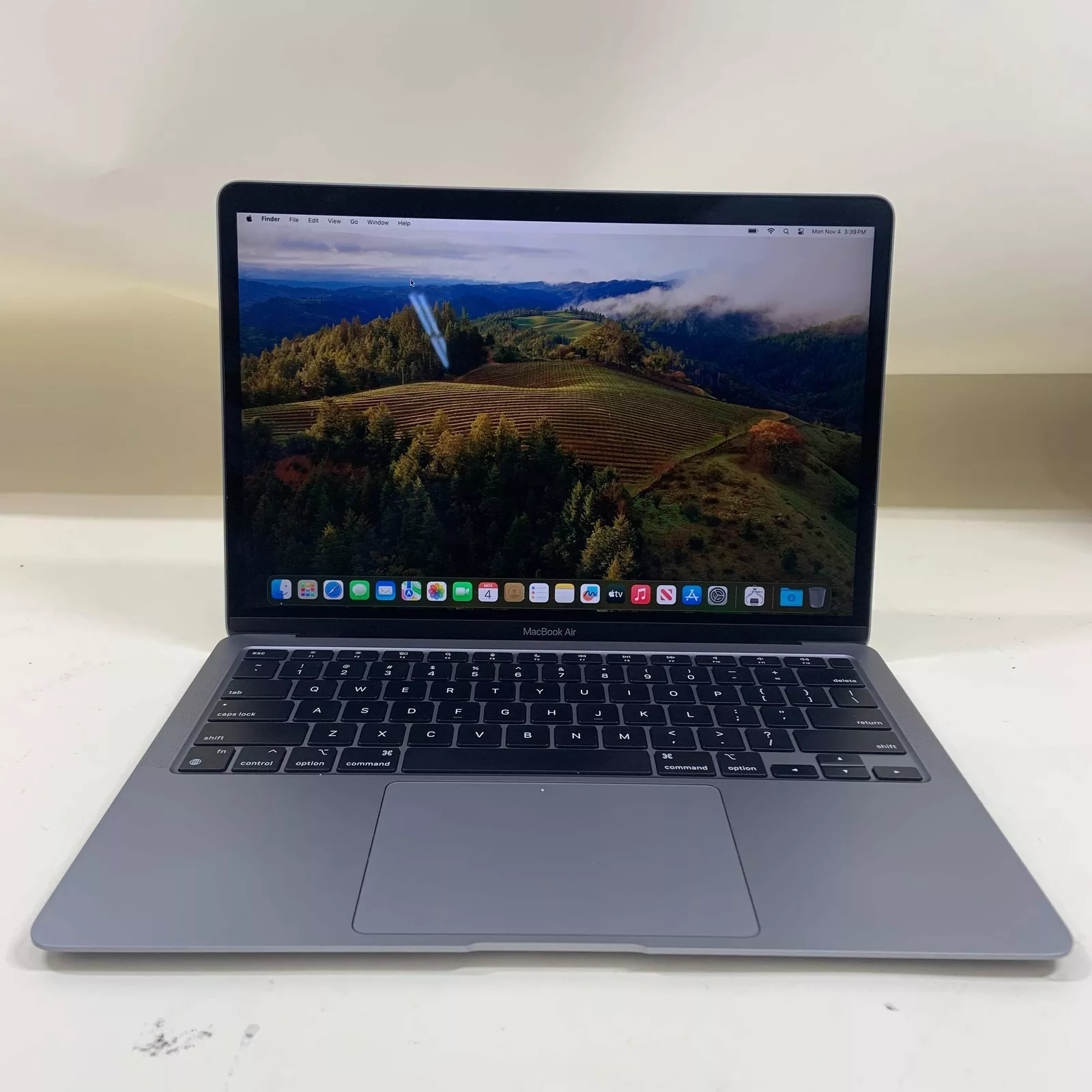Is your MacBook mic not working? This can be frustrating when you need to join a video call or record something important. The good news is that most microphone problems can be fixed with a few simple steps. Checking your sound settings and app permissions usually solves most Mac microphone issues without needing technical help.
Many Mac users face microphone problems after software updates or when using certain apps. The issue might be as simple as wrong settings or as complex as outdated drivers. Sometimes, your Mac might think headphones are plugged in when they’re not, or an app might not have permission to use the mic.
Before rushing to the Apple Store, try some basic fixes like restarting your computer or checking sound input settings. You can also try the keyboard shortcut fix that worked for many users by pressing Control+Option+Shift+Power simultaneously. These simple steps often get your MacBook’s microphone working again quickly.
1. Check Sound Input Settings
- Click Apple Menu > System Settings (or System Preferences on older macOS).
- Go to Sound > Input.
- Select Internal Microphone (or the mic you want to use).
- Adjust the Input Volume slider and test by speaking—watch the input level meter.
👉 If the wrong microphone is selected, your Mac won’t capture audio.
2. Allow Microphone Access for Apps
- Open System Settings > Privacy & Security > Microphone.
- Ensure the app you’re trying to use (Zoom, Teams, Discord, etc.) has permission enabled.
- Restart the app after changing settings.
3. Restart Core Audio
Sometimes the audio system just needs a reset:
- Open Activity Monitor (search in Spotlight).
- Search for coreaudiod.
- Select it and click the X button to quit.
- macOS will automatically restart it.
4. Run a Quick Test
- Open Voice Memos (built-in app).
- Record a short clip and play it back.
- If it works here but not in another app, the issue is app-specific.
5. Reset PRAM/NVRAM & SMC (for Intel Macs only)
- PRAM/NVRAM reset: Shut down → hold Option + Command + P + R while restarting for ~20 seconds.
- SMC reset: Shut down → press Shift + Control + Option + Power for 10 seconds, then release and restart.
(Apple Silicon Macs don’t need this—just restart.)
6. Clean the Microphone
Dust or debris can block the tiny mic holes (usually near the keyboard or camera).
- Gently clean with a soft brush or microfiber cloth.
- Avoid liquids or compressed air directly into the holes.
7. Update macOS
- Go to System Settings > General > Software Update.
- Install the latest macOS—updates often fix audio bugs.
8. Last Resort: External Mic or Apple Support
- If none of the above works, try using an external USB or Bluetooth microphone.
- Persistent issues may indicate hardware failure—contact Apple Support or visit an Apple Store.
✅ Quick Fix Checklist
- Correct mic selected in Sound settings
- App has microphone permission
- Input volume is turned up
- Core Audio restarted
- macOS updated
Key Takeaways
- Check your Mac’s sound input settings and app permissions in System Preferences to fix most microphone issues.
- Restart your MacBook or try the Control+Option+Shift+Power keyboard shortcut to reset audio hardware.
- Clean the small microphone holes on your MacBook and make sure no dirt blocks the audio input.
Initial Troubleshooting Steps
When your MacBook microphone stops working, a few simple fixes can often solve the problem quickly. Start with these basic steps before moving on to more complex solutions.
Check the Hardware Connections
First, make sure nothing is blocking your MacBook’s microphone. Dust, debris, or even thin protective covers can interfere with the mic’s performance. Clean the microphone area gently with a soft, dry cloth.
If you’re using an external microphone, check that it’s properly connected to your MacBook. Loose connections can cause audio problems. Try unplugging and reconnecting the device.
Your MacBook might be detecting the wrong audio input device. To check this:
- Click the Apple menu → System Preferences → Sound → Input
- Look at the list of available microphones
- Select your preferred microphone (Internal or External)
- Make sure the input volume isn’t set too low
- Speak and watch for the input level bars to move
Restart the MacBook
A simple restart can fix many Mac audio problems. Your computer’s operating system handles countless processes, and sometimes the audio drivers need a refresh.
To restart your MacBook:
- Click the Apple menu in the top-left corner
- Select “Restart”
- Wait for your computer to shut down and start up again
After restarting, test your microphone again. Many users find this fixes their MacBook microphone issues right away.
For a more thorough reset of the audio system, you can also try:
- Shutting down completely (not just restart)
- Unplugging any external audio devices
- Waiting 30 seconds before turning your Mac back on
Test the Microphone with Another Application
If your mic works in some apps but not others, the problem might be app-specific. Try testing your microphone in different applications to narrow down the issue.
Open apps like FaceTime, Voice Memos, or Photo Booth that use your Mac’s microphone. Record a short clip and play it back to check if your voice was captured.
Some apps might need permission to access your microphone. To check and adjust permissions:
- Go to Apple menu → System Preferences → Security & Privacy
- Click the Privacy tab
- Select Microphone from the left sidebar
- Make sure the checkbox is selected for any app that needs mic access
If an app still can’t use your mic after granting permission, try closing and reopening it. Sometimes apps need to be restarted to recognize new permission settings.
Software Configuration and Settings
Software problems often cause mic issues on Macs. Checking your system settings and keeping your software updated can solve many microphone problems without needing technical help.
Verify Sound Input Settings in System Preferences
First, check if your Mac recognizes your microphone correctly. Click the Apple icon in the top left corner and select “System Preferences” (or “System Settings” in newer macOS versions).
Go to the “Sound” settings and click on the “Input” tab. Here you’ll see a list of available microphones. Select your MacBook’s built-in microphone or your external mic if you’re using one.
Make sure the correct device is highlighted. Speak into the microphone and watch the input level meter – it should move when you talk. If it doesn’t, your Mac might not be detecting sound from the microphone.
For app-specific issues, check your browser settings too. Some users fixed their problems by changing Safari settings from “Ask” to “Allow” for microphone access.
Adjust Microphone Levels
Once you’ve confirmed the right microphone is selected, you may need to adjust its volume levels. In the Sound Input settings, locate the “Input volume” slider.
If the slider is set too low, your microphone won’t pick up your voice properly. Move it to the right to increase sensitivity. Speak normally and watch the input level bars respond.
The ideal setting shows green bars when you speak at a normal volume. If the bars barely move, increase the input volume. If they constantly hit the red zone, reduce it slightly.
For best results, position the slider at about 75% and test with different applications. Some apps like Zoom or FaceTime have their own audio settings that might override system settings.
Input level meters should move when you speak. If not, try checking privacy settings which might be blocking microphone access.
Update macOS Software
Outdated system software often causes microphone problems. Apple regularly releases updates that fix audio bugs and improve compatibility.
To check for updates, click the Apple icon and select “System Preferences.” Click on “Software Update” and wait for your Mac to check for available updates.
If updates are available, click “Update Now” to install them. Your computer may need to restart during this process. Updating your software is one of the essential steps for fixing microphone issues.
Some applications also need their own updates. Check for updates in the App Store for Apple applications or visit the developer’s website for third-party software.
After updating, restart your Mac completely. This simple step often fixes temporary glitches that affect microphone performance.
Privacy and Security Considerations
Your Mac’s microphone involves important privacy settings that could affect its function. Making sure apps have proper access and reviewing security settings can solve many microphone problems.
Enable Microphone Access for Apps
Mac’s privacy features may block apps from using your microphone. If your mic isn’t working, check if the app has permission to access it.
To check app permissions:
- Click the Apple menu
- Select System Preferences (or System Settings in newer macOS)
- Click Security & Privacy (or Privacy & Security)
- Select Microphone from the left sidebar
- Make sure the app you’re using has a checkmark next to it
Some apps need specific permission settings. For example, browsers like Safari may need website-specific microphone permissions that you can adjust in the browser settings.
If an app doesn’t appear in the list, try using it once first. macOS often prompts for permission when an app tries to use the mic for the first time.
Review Security Settings
Recent macOS updates have tightened security around microphone access. This helps protect your privacy but can sometimes cause issues.
Check these security settings:
- Input volume: Go to Sound settings and make sure the input volume isn’t muted
- App-specific settings: Some apps have their own audio settings that need adjustment
- System updates: Outdated software can cause permission conflicts
Privacy indicators (orange or green dots) appear in newer Macs when an app uses your microphone or camera. If you don’t see these indicators when trying to use your mic, it confirms your Mac isn’t accessing the microphone.
For video conferencing apps, you might need to check both microphone and camera permissions for everything to work correctly.
Common Application-Specific Fixes
Different apps on your MacBook may handle microphone inputs differently. Some problems only show up in certain programs while your mic works fine elsewhere.
Configure Audio Settings in Communication Apps
Many communication apps have their own audio settings that can override your system preferences. In Zoom, click the arrow next to the microphone icon and select “Audio Settings” to make sure the correct microphone is chosen. You can also test your mic right in the settings window.
For FaceTime issues, close the app completely and restart it. Sometimes FaceTime needs a fresh start to recognize your mic properly. Check your privacy settings to ensure FaceTime has microphone access.
Skype users should click their profile picture, select “Settings,” then “Audio & Video” to check microphone selection. If your mic isn’t working in Skype:
- Try selecting a different input device, then switch back
- Adjust the input volume slider
- Toggle the automatic adjustment setting
Troubleshoot Microsoft Office Audio Issues
Microsoft Office apps like Teams and PowerPoint often need specific attention for microphone functionality. For Teams, click your profile picture, select “Settings,” then “Devices” to configure your microphone.
If dictation isn’t working in Word or other Office apps:
- Ensure dictation is enabled in system preferences
- Check that Office has microphone permissions
- Restart the Office app after changing any settings
PowerPoint presentation recordings may fail if the app can’t access your mic. To fix this, go to System Preferences > Sound > Input and make sure your internal microphone (or external device) is selected before opening PowerPoint.
Ensure Compatibility with Professional Audio Software
Professional audio programs like Ableton, Logic Pro, and GarageBand require proper configuration for microphone input. These apps often need an audio interface or specific sample rate settings to work correctly.
For GarageBand, create a new project and select “Audio” when asked what kind of track you want to record. Then click the smart controls button and select your microphone from the input source dropdown.
Ableton users should check their audio preferences (CMD+comma) and verify the correct input device is active. If recording quality is poor, try:
- Lowering the buffer size for less latency
- Checking that sample rates match between your mic and software
- Restarting your Mac if settings won’t save
DAW software sometimes requires exclusive access to your mic, which can block other apps from using it at the same time.
Addressing Hardware Concerns
Sometimes mic problems stem from physical damage or wear to your MacBook’s built-in hardware. When software fixes don’t solve the issue, it’s time to look at the actual microphone components and consider alternatives.
Inspect the Microphone Hardware
First, check for any visible damage or debris around your Mac’s microphone openings. Most MacBooks have tiny microphone holes near the speaker grills or keyboard. Dust and dirt can block the microphone input, causing poor sound quality or complete failure.
Use a soft, dry brush or compressed air to gently clean these openings. Be careful not to push debris further inside the microphone holes.
Physical damage from drops or liquid spills often affects microphone function. If your MacBook recently experienced an accident, this might explain the mic problems.
For persistent issues, the internal microphone hardware may be failing. This is more common in older MacBooks that have endured years of use.
Consider External Microphone Options
When internal microphones fail permanently, external options provide reliable alternatives. USB microphones offer excellent sound quality and plug-and-play simplicity with most Mac models.
Bluetooth microphones work well if you prefer a wireless setup. Just make sure to check compatibility with your MacBook model and macOS version.
Headsets with built-in microphones often deliver clearer audio than MacBook internal mics, especially in noisy environments. They range from affordable basics to professional-grade equipment.
For video calls or recordings, even a simple pair of EarPods or AirPods can provide better microphone quality than a malfunctioning internal mic. The microphone sits closer to your mouth, improving sound pickup.
Test different ports if your external microphone isn’t recognized. Some ports may work better than others on your specific Mac model.
Additional System Checks and Maintenance
When basic troubleshooting doesn’t fix your MacBook microphone issues, deeper system checks can often solve the problem. These technical solutions address underlying software conflicts and reset critical hardware components.
Run System Diagnostics
Mac computers have built-in diagnostic tools that can identify hardware issues affecting your microphone. To use Apple Diagnostics:
- Shut down your MacBook completely
- Press the power button and immediately hold down the D key
- Hold until you see a screen asking you to select your language
- Select your language and the test will begin automatically
The test takes about 2-3 minutes to complete. If your microphone has a hardware problem, you’ll see a reference code. Write this code down and contact Apple Support with this information.
You can also check audio input levels in real-time. Open System Preferences → Sound → Input and watch the input level meter while speaking. If the bars move, your mic is detecting sound but might have software issues.
Clear System Caches and Preferences
Corrupted preference files can cause microphone problems. Clearing these files forces your Mac to create fresh ones.
To reset audio preferences:
- Open Finder and press Shift+Command+G
- Type
/Library/Preferences/and press Enter - Look for files named
com.apple.audioorcom.apple.soundpref - Move these files to your desktop (as backup)
- Restart your Mac
Your Mac will create new preference files automatically. If this doesn’t help, you can restore the backup files from your desktop.
Another option is checking app permissions in System Preferences → Security & Privacy → Privacy → Microphone. Make sure apps you want to use with the mic have checkmarks beside them.
Perform an SMC Reset
The System Management Controller (SMC) handles many hardware functions on your Mac, including audio components. Resetting it can fix stubborn microphone issues.
For MacBooks with the T2 security chip (2018 or newer):
- Shut down your Mac
- Hold Control+Option+Shift for 7 seconds
- While still holding, press and hold the power button too
- Hold all four keys for another 7 seconds
- Release all keys, wait a few seconds, then press power to turn on
For older MacBooks with removable batteries, shut down, remove the battery, press power for 5 seconds, reinstall the battery, and restart.
For older models with non-removable batteries, shut down, press Shift+Control+Option and the power button for 10 seconds, release, and restart. This reset often fixes microphone problems when software solutions don’t work.
Advanced Troubleshooting Techniques
When basic fixes don’t solve your MacBook microphone issues, it’s time to try more technical approaches. These methods can help identify hidden problems that might be affecting your mic’s performance.
Utilize Console for Error Logging
The Console app can help find the root cause of microphone problems on your Mac. This built-in tool shows error messages that might explain why your mic isn’t working.
To open Console:
- Go to Applications > Utilities > Console
- Click on “Error” or “All Messages” in the sidebar
- Type “audio” or “microphone” in the search bar
Look for red error messages that mention audio input devices. These logs often show exactly when and why the mic stopped working. Write down any error codes you see, as they can be helpful when searching for solutions online or contacting Apple support.
The Console might reveal software conflicts. Some third-party apps can block mic access without your knowledge. If you notice errors related to a specific app, try quitting that program to see if your mic starts working again.
Create a New User Account for Testing
Creating a test user account is a smart way to check if your mic problem is system-wide or just in your user profile.
Steps to create a test account:
- Go to System Preferences > Users & Groups
- Click the lock icon and enter your password
- Click the “+” button to add a new user
- Set up a basic account and log into it
After logging into the new account, test your microphone in multiple apps. If it works in the new account but not your main one, your user profile might be corrupted. This often happens when preference files become damaged.
You can fix this by resetting PRAM/NVRAM. Restart your Mac and immediately hold Option + Command + P + R for about 20 seconds. This resets important system settings that control hardware like your microphone.
Frequently Asked Questions
Here are answers to common problems Mac users face with microphone issues. These solutions work for different Mac models and various situations like video calls, laptop positioning, and using external mics.
How can I troubleshoot my MacBook Air’s microphone if it’s not functioning?
First, check your sound settings. Go to System Settings > Sound > Input and make sure the internal microphone is selected.
Look for the input level indicator when you speak – it should move when sound is detected. If it doesn’t, try restarting your MacBook.
Check if any apps have microphone permissions blocked. Go to System Settings > Privacy & Security > Microphone to see which apps have access.
What steps should be taken to resolve microphone issues on a MacBook?
Start with basic checks like adjusting the volume settings in System Settings > Sound > Input. Make sure the input volume isn’t set too low.
Check for software updates. Old macOS versions can sometimes cause microphone problems. Go to System Settings > General > Software Update.
Try resetting the SMC (System Management Controller) if the problem persists. This can fix hardware-related issues on your Mac.
What methods are available to fix microphone problems encountered during Microsoft Teams meetings on a MacBook?
Check Teams’ permission settings first. Microsoft Teams needs explicit permission to use your microphone. Go to System Settings > Privacy & Security > Microphone.
In Teams, check the audio settings by clicking on your profile picture, then Settings > Devices. Make sure the correct microphone is selected.
Try quitting and reopening Teams. If that doesn’t work, check if other apps can access your microphone to determine if it’s a Teams-specific issue.
How can I solve the issue of my MacBook’s microphone not working when the lid is closed?
When using your MacBook in clamshell mode (lid closed), the internal microphone might be covered. Connect an external microphone or headset instead.
Make sure your external display has a built-in microphone if you’re relying on that. Go to System Settings > Sound > Input to select the correct input device.
Some Mac models automatically disable the internal microphone when the lid is closed. This is by design and requires an external solution.
What are the instructions to reset a MacBook’s microphone through the Terminal?
Open Terminal from Applications > Utilities or by searching in Spotlight. Type “sudo killall coreaudiod” and press Enter.
Enter your administrator password when prompted. This command restarts the core audio processes on your Mac.
After running the command, test your microphone to see if it works. This solution often fixes microphone issues caused by software glitches.
How do I get my external microphone to work with my Mac?
Connect your external microphone to your Mac using the appropriate port (USB, 3.5mm headphone jack, or Thunderbolt).
Go to System Settings > Sound > Input and select your external microphone from the list of available devices.
If your mic isn’t recognized, try a different USB port or cable. Some mics may require drivers, so check the manufacturer’s website for Mac-compatible software.







